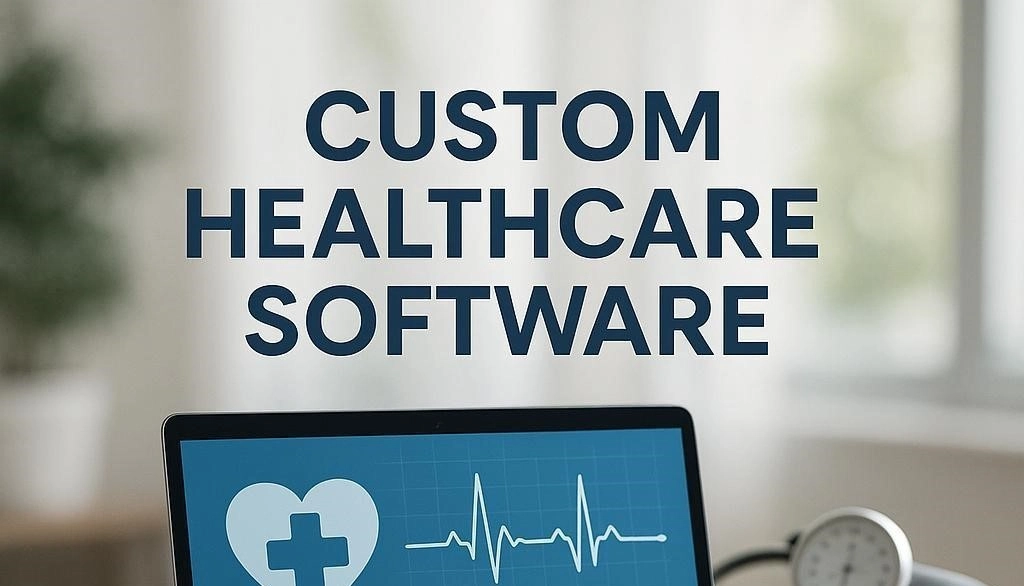Custom vs. Off-the-Shelf Software: Which Is Right for Your Business?
09 Jan 2025When it comes to our software, we are too accustomed to the "one size fits all" approach. However, this could be potentially detrimental than beneficial. Customizing might be expensive but, it works well for growing businesses and helps secure their initial boost. While off-the-shelf sets up, the ground-level infrastructure, which you can then build further, albeit with restrictions.
But wait–don’t be caught up in stereotypes! Instead, let’s take a deeper dive into both types, through the following article so you can make a smart and informed choice for your business.
What Is Custom Software?
It’s a personalized software designed to meet “only” your business model requirements and structure, thus making it uniquely yours. It can be developed by an in-house team or externally sourced team.
Advantages of Custom Software
- The workflow integrates easily with the existing system.
- Greater control allows more personal engagement with software.
- Meets businesses' unique requirements.
- Automates challenging and repetitive tasks.
- Provides enhanced security for custom features.
Who Can Use Custom Software?
- Startups/Small businesses - Custom software solutions can help startups grow their business ideas by offering support to showcase their unique requirements and establishing an audience market.
- Security businesses - Security is unique to each company with few overlapping common features. Hence, in order to strengthen the security model, it is best to go with custom software so the risk of hacking and threats can be minimized.
- Government organizations - Unique Confidential data needs security designed accordingly, so here a custom solution will work best.
- Others - Any establishment, having mostly unique requirements or security concerns should opt to go with custom software development.
Famous examples include -
- McDonalds - contactless payment options and self-serve kiosks.
- Air Canada - Revenue management and ticketing back operations.
- Unilever Vietnam - production planning and auto weighing system.
What Is Off-the-Shelf Software?
Off-the-shelf software comprises industry-standard software applications. They are available to the public and easily accessible for immediate use. A set of commonly used features and functionalities are provided and can be used to set up a general system.
Advantages of Off-the-Shelf Software
- The purchase price is cost-effective with payment options.
- No extra documentation is needed; it follows standards.
- Support is available via website contact information.
- Regular updates provide bug fixes and new features.
- Widely tested and used, it ensures business reliability.
- Meets industry and legal requirements.
Who Can Use Off-the-Shelf Software
Organizations where -
- Tasks can be managed with general software.
- Scalability is not an immediate concern.
- No requirement to integrate software with an existing system or third-party API.
- A budget plan for easy efficient software needs to be followed.
- For example- CMS, CRM- Zoho CRM, Mail services - Gmail, outlook, etc., Editor programs - Adobe Photoshop and Microsoft - Microsoft Office suite, Microsoft Teams, Microsoft Project, Power BI, etc.
Differences Between Custom and Off-the-Shelf Software
- Cost - In Off-the-shelf, It is feasible with standardized rates. while in Custom ,It may have a higher initial cost. However, it typically does not require additional licenses or subscription fees, which is often necessary for off-the-shelf solutions.
- Features and Functionalities - Off-the-shelf, General, and commonly used features built for a mass audience, whereas Custom, Features are customized according to your unique requirements.
- Third-party service Integration - Off-the-shelf, General, and commonly used features built for a mass audience while Custom provides full control over customization and functionality, thereby making it easier to integrate with third-party services.
- Scalability - Off-the-shelf has limited ability to modify or integrate with existing systems and third-party services whereas Custom is scalable, as it is built from a personalized perspective.
- Security - Off-the-shelf is susceptible to specific security vulnerabilities and cyberattacks, while Custom is built to withstand security threats, with rigorous testing and refinement at every stage of development.
- Maintenance & Support - Off-the-shelf support is provided based on terms and conditions, with potential challenges in software updates and glitch resolution while Custom offers full support for features since it is tailored to your specific requirements.
Factors to Consider When Choosing a Software Solution
We’ve explored various aspects of custom and off-the-shelf software. Still, feeling indecisive? Let’s summarize everything in this section, where we’ll review key factors to help narrow down your options and choose the best fit for your business.
- Business Goal - A thorough analysis must be conducted to determine whether the goal addresses a unique issue or a common challenge for our audience.
- Project Cost - Consider whether it’s necessary to make a significant financial investment or if the business goal can be achieved through sustainable measures.
- Deadline - Can the project be completed within the given time frame, or are we short on time and require a quicker development process?
- Requirements and Features - Can the specified requirements be met with off-the-shelf software, or do we need to develop a custom solution from scratch?
- Scalability - Will the project need to accommodate additional requirements in the future, or is it static and unlikely to change?
A custom solution for which time and money resources are available and there is a need for more control over features in the future with scalability. For Example -
- Off the shelf - Asana, a work management software, helps improve project visibility, streamline communication, and automate routine tasks.
- Custom - Walmart has implemented a custom solution to manage supply chain, inventory, and logistics operations, which helps speed up their order processing.
Conclusion
In conclusion, choosing between custom and off-the-shelf software largely depends on your business's specific needs, budget, and long-term goals. By carefully assessing your priorities—such as business objectives, budget constraints, deadlines, and future scalability—you can make an informed decision that aligns with your vision. Ultimately, the best solution efficiently supports your operations and helps your business thrive.
At Trawlii Pvt Ltd, we offer various options for custom software development. Please browse through the services we offer and the industries we cater to. Here are some of our existing portfolios




